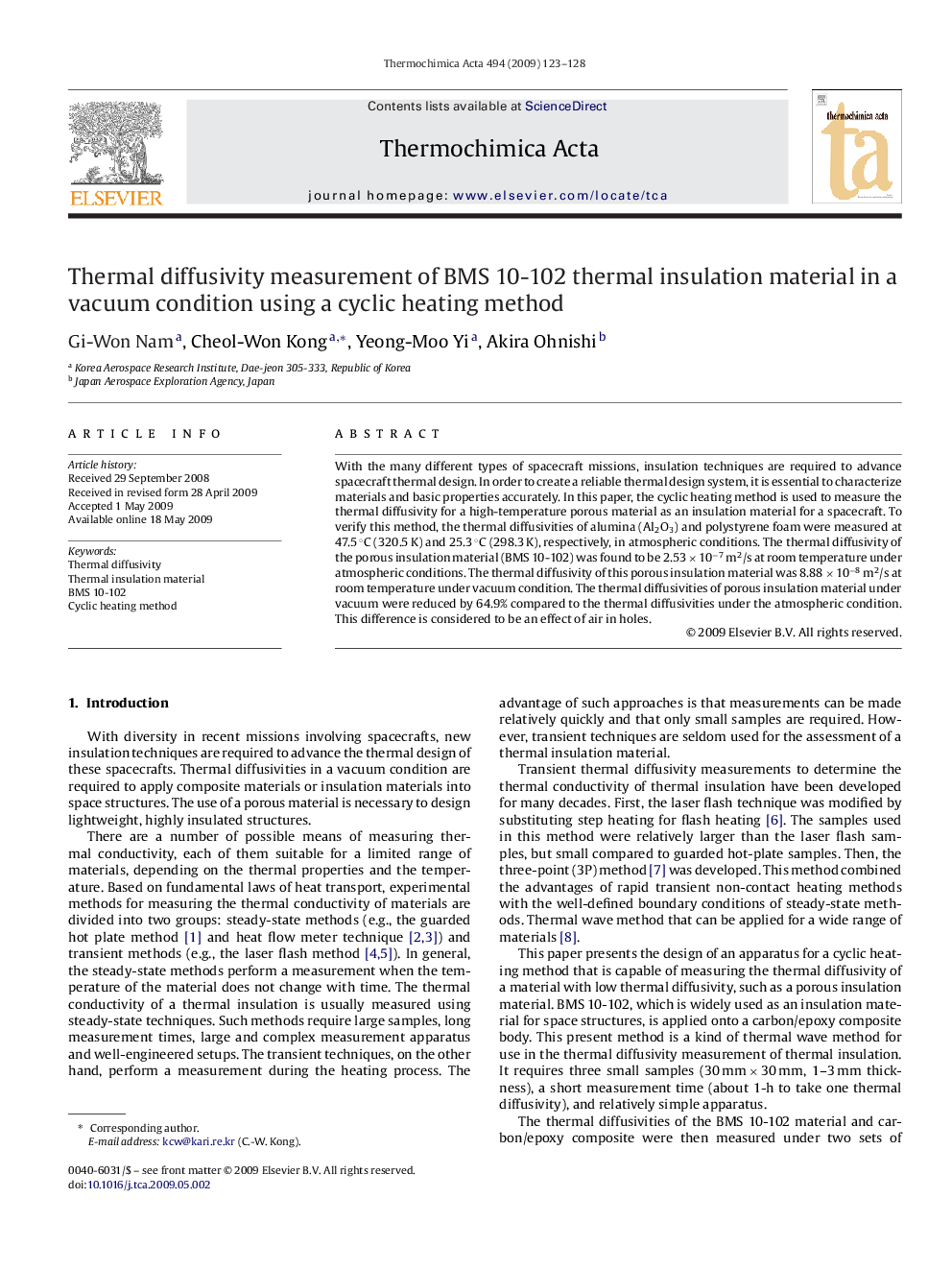| Article ID | Journal | Published Year | Pages | File Type |
|---|---|---|---|---|
| 675063 | Thermochimica Acta | 2009 | 6 Pages |
With the many different types of spacecraft missions, insulation techniques are required to advance spacecraft thermal design. In order to create a reliable thermal design system, it is essential to characterize materials and basic properties accurately. In this paper, the cyclic heating method is used to measure the thermal diffusivity for a high-temperature porous material as an insulation material for a spacecraft. To verify this method, the thermal diffusivities of alumina (Al2O3) and polystyrene foam were measured at 47.5 °C (320.5 K) and 25.3 °C (298.3 K), respectively, in atmospheric conditions. The thermal diffusivity of the porous insulation material (BMS 10-102) was found to be 2.53 × 10−7 m2/s at room temperature under atmospheric conditions. The thermal diffusivity of this porous insulation material was 8.88 × 10−8 m2/s at room temperature under vacuum condition. The thermal diffusivities of porous insulation material under vacuum were reduced by 64.9% compared to the thermal diffusivities under the atmospheric condition. This difference is considered to be an effect of air in holes.
